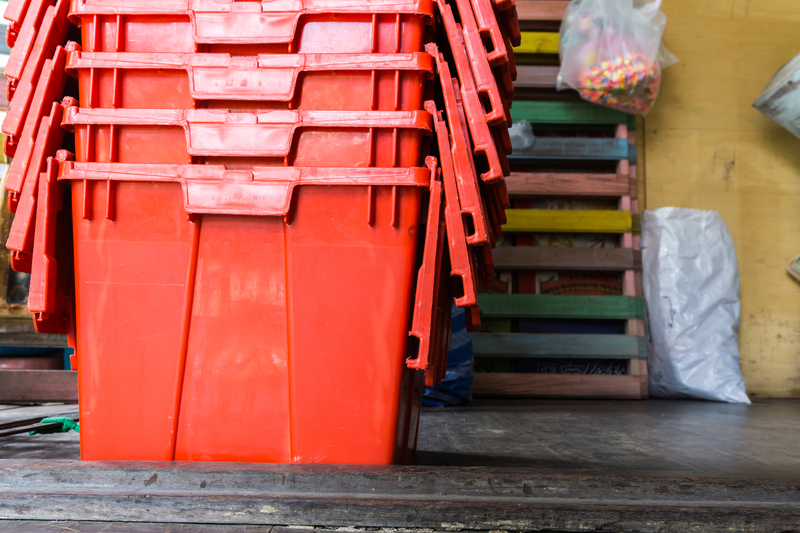What to Know Before You Move Your Bed and Mattress
Planning a move is never easy, but when it comes to transporting your bed and mattress, specific challenges and considerations arise that are often underestimated. Among all your household items, your bed set is one of the bulkiest and most frequently overlooked. In this comprehensive guide, you'll learn everything you need to know before you move your bed and mattress, ensuring a smooth, safe, and hassle-free process.

Why Careful Planning Is Critical for Moving Your Bed and Mattress
Your bed and mattress are significant investments in both money and comfort. Their size, structure, and materials make them tricky to move without proper preparation. Mishandling can lead to:
- Physical damage to the bed frame or mattress
- Soiling or exposure to moisture
- Lost or missing hardware during disassembly
- Personal injury from improper lifting techniques
Understanding the process will help you avoid common pitfalls and keep your sleep solutions in prime condition.
Pre-Move Assessment: Is It Worth Moving Your Bed or Mattress?
Before you even begin packing, it's essential to determine if moving your current bed and mattress is the best decision. Ask yourself:
- Mattress Age: Is your mattress over 8 years old? Most mattresses lose support and comfort after this period. Consider replacing rather than moving an old mattress.
- Condition: Are there dips, permanent stains, or lingering odors? Moving a damaged mattress can be more hassle than it's worth.
- Size Compatibility: Will your current bed and mattress fit the doorway, staircase, or elevator of your new residence?
- Cost to Move: Sometimes, moving a bulky bed set can be costlier than buying a new one at your new location.
If your bed frame or mattress doesn't pass these checks, it might be time for an upgrade rather than a move.
Preparation: Steps to Take Before Moving Your Bed and Mattress
1. Gather Necessary Supplies
- Mattress bag: Protects your mattress from dirt, dust, and moisture.
- Furniture blankets: Shields the bed frame and headboard from scratches and dents.
- Ratchet straps or rope: To secure your mattress and bed parts in the moving vehicle.
- Phillips and flathead screwdrivers, Allen wrenches: For bed frame disassembly.
- Ziplock bags or small containers: To store screws, bolts, and other small hardware.
- Labels and tape: For organization and easy reassembly.
2. Measure Everything!
Measure your mattress and bed frame dimensions as well as doorways, stairwells, corridors, and your new bedroom space. This ensures everything fits and prevents last-minute surprises like getting stuck in the hallway.
3. Clean Thoroughly
- Vacuum both sides of the mattress to remove dust, skin flakes, and mites.
- Wipe down the bed frame with appropriate cleaners, especially if it's wooden or upholstered.
- Allow mattresses and frames to dry completely before wrapping for transport.
Disassembling Your Bed Frame: Step-By-Step
Most beds - especially larger ones such as king or queen sizes - need to be disassembled for safe, efficient moving. Here's how:
Step 1: Remove Bedding and Accessories
- Strip all sheets, pillows, comforters, and mattress toppers.
- Pack bedding in clearly labelled bags or boxes.
Step 2: Take Out the Mattress and Box Spring
- Carefully lift the mattress - ideally with at least one helper.
- Slip the mattress into a protective mattress bag.
- Box springs, if present, should also be bagged or covered with moving blankets.
Step 3: Disassemble the Bed Frame
- Headboard and Footboard: Unscrew any bolts or hardware. Mark each piece for easy reassembly.
- Side Rails and Slats: Detach from the main frame and bundle them together. Use tape or ties to secure.
- Hardware: Place all screws, bolts, and small components in a labeled ziplock bag.
Keep a manual or take smartphone photos during disassembly to reference during reassembly at your new home.
How to Move Your Mattress: Tips and Best Practices
Wrap and Protect
- Always use a mattress bag for any distance move. It prevents dirt, dust, bugs, and moisture infiltration, all of which can damage your mattress.
- If you don't have a mattress bag, use clean moving blankets, old sheets, or plastic wrap as improvised covers.
Lifting and Carrying
- Mattresses are much heavier and more unwieldy than they appear. Enlist at least one helper.
- Bend your knees (not your back) and keep the mattress close to your body as you lift.
- Carry the mattress on its side, not flat, for easier navigation through doorways and hallways.
Transport in a Vehicle
- Pick a van or moving truck that can lay the mattress flat. Avoid bending or folding, as it can damage the inner structure and void warranties.
- Standing up temporarily is okay, but do not strap a mattress to the roof of a car - it's unsafe and could damage the mattress or cause accidents.
- Secure the mattress with ratchet straps or rope to prevent shifting during transit.
Moving Bed Frames: Materials Matter
The type of material your bed frame is made from will influence your approach.
- Wooden Frames: Be mindful of scratches, dings, or breaking under stress. Wrap thoroughly in blankets and watch for protruding screws or nails.
- Metal Frames: Many metal beds are modular and break down easily, but watch for bending and keep all connectors together.
- Upholstered or Specialty Beds: These require extra padding or shrink wrap to prevent fabric tears and stains.
Platform Beds and Adjustable Bases
- Platform beds can be heavy and unwieldy. Break them down as much as possible, and pad sharp corners heavily.
- Adjustable bases (electric) require care with electrical components - disconnect wires and pack the remote controls safely.
Moving Specialty Mattresses: Memory Foam, Latex, Hybrids
Today's mattresses aren't all traditional innerspring types. Memory foam, latex, and hybrids require special attention:
- Never fold or bend: These materials can crack or become permanently misshapen.
- Heavier than expected: Modern foams can be surprisingly heavy, so ensure adequate lifting help.
- Always keep dry: Foams are susceptible to water damage and mold if not kept wrapped and dry.
Mattress-in-a-Box Fans?
If you purchased a mattress that came compressed, you cannot re-compress it at home. You'll still need to move it at full expanded size - plan accordingly.
Moving Insurance and Mattress Warranties
Protect your investment! Many movers offer limited insurance for property in transit. However, some warranties on mattresses become void if:
- The mattress is bent or folded
- The mattress has stains or signs of improper transportation
- Lack of proper support shown in the destination (i.e., using on an improper base)
Take photos of your mattress and bed frame before the move, and keep your receipts and warranty paperwork. This documentation can be key if you need to make a claim.
What to Do Upon Arrival: Unloading and Reassembly
Inspect Before Bringing Inside
- Check the mattress wrap or bag for tears or signs of water damage.
- Inspect the bed frame for missing hardware or dents.
- If possible, clean off any dirt picked up during the move, and allow items to air out briefly.
Reassembling Your Bed
- Follow your labels/photos or manual for correct placement of components.
- Tighten all screws and bolts securely, but avoid over-tightening which can strip hardware or damage frame material.
- Ensure the bed is level and stable before placing the mattress on top.
Set Up Proper Mattress Foundation
Placing your mattress on an unsuitable base can not only compromise comfort but can also void warranties. Make sure the slats, box spring, or base are in good condition and compatible with your specific mattress type.
Common Mistakes to Avoid When Moving Beds and Mattresses
- Rushing disassembly or skipping the protection step
- Underestimating mattress or frame weight and size
- Not measuring doorways and hallways at the new location
- Forgetting to label hardware or taking photos
- Trying to move a mattress or frame alone--risking injury and damage
- Using poor lifting technique or inappropriate vehicles (e.g., tying to a car roof)
When Should You Hire Professional Movers?
If your bed set is particularly large, heavy, or valuable, or if there are difficult stairs/elevators at either location, consider professional movers. Professional moving companies:
- Have experience and tools for safe, efficient disassembly and reassembly
- Offer insurance or valuation protection
- Can move items through tight spaces without property damage
- Save you stress, time, and potential injury
Request quotes and compare services from several movers, asking specifically about their process for moving beds and mattresses.

Final Tips and FAQs: Moving Your Bed and Mattress
How do you keep a mattress clean while moving?
Always use a mattress bag or at least blanket wrap, keep it upright or flat in a clean moving vehicle, and avoid dragging across floors.
Can you fold a mattress for moving?
Only if the manufacturer specifies it's safe to do so. Most memory foam and hybrid mattresses should never be bent or folded.
Should you move an old or stained mattress?
Usually not worth the effort or moving costs - consider recycling or donating instead and buy new at your destination.
Can you move a bed and mattress by yourself?
It's not recommended. Mattresses and frames are heavy, awkward, and can cause back injury or wall damage if moved alone. Always get help.
Conclusion: Make Moving Your Bed and Mattress Easy
Planning and preparation help ensure your bed and mattress arrive at your new home clean, undamaged, and ready for a restful night's sleep. Review the steps on how to properly move a bed and mattress outlined above - including checking the condition, disassemble and protect, transport, and set up again. It's worth the extra care for such essential pieces of your daily comfort and health.
- Assess if it's worth moving your existing bed and mattress, especially if it's old or damaged.
- Gather the right supplies, measure all entries and exits, and clean before you wrap.
- Disassemble and label everything, bag all hardware, and take photos for easier reassembly.
- Use proper lifting techniques and avoid folding mattresses unless specifically allowed by the manufacturer.
- Upon arrival, inspect, clean, and carefully reassemble using your labeled hardware and photos.
- Consider professional movers for large or valuable beds and mattresses.
With this complete guide on what to know before moving your bed and mattress, you're prepared to handle every step confidently and safely.



